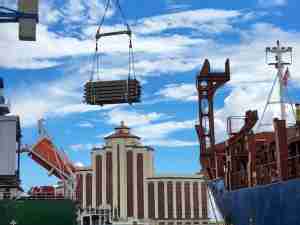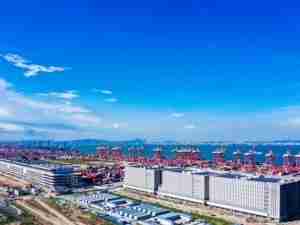The Australian dollar sank to a fresh four-week low of $0.9803 on the comments from Warwick McKibbin, an academic and a member of the central bank's policymaking board.
Treasurer Wayne Swan in November forecast GDP growth of 3.25 percent in the 2010-11 fiscal year, up from a 3.0 percent projection, but said spending would be cut to ensure a surplus of A$3.1 billion or 0.2 percent of GDP in 2012/13.
Australia exports more than half the world's coking coal, which is used in steel manufacturing, and it is also the second-biggest exporter of thermal coal used for power generation.
"The coal industry will take several weeks and in some cases months to get back to full production," Bligh said.
Food prices are surging around the country as the floods ruin Queensland crops and distribution networks. Prices for tomatoes have leapt about 200 percent in two weeks, while beef is up 11 percent and wheat has risen 4 percent in four months.
Brisbane a Deserted City
Rescue crews took advantage of some rare sunshine to look for 43 people still missing from tsunami-like flash floods that tore through townships west of the city.
"Some of the houses have exploded with the force of the water. People have been washed away. It will take days to complete this search and recovery," said Deputy Police Commissioner Ian Stewart.
In Brisbane, thousands of homes and businesses were deserted as swirling floodwaters rose in and around the city, forcing residents to flee with a few possessions to higher ground and to evacuation centres crowded with more than 3,500 people.
"If you start to see water in your yard, get out. Take your family and get to safety. This water could rise very, very quickly," said state premier Bligh.
Some Brisbane residents tried to carry on as normal, with early morning joggers running even though parts of their routes were underwater. Others were distraught.
"This is my whole life, everything is gone. I never thought it would get this bad," said Kim Hung, manager of the Salt 'n' Pepper catering business, as two friends floated a coffee machine toward higher ground.
As the waters rose strangers formed human chains, sometimes in chest high water, to pass family possessions from flooded homes to dry land and into cars and trucks and safety.
Raw sewage began spilling into the river and creeks, prompting authorities to warn of heightened disease risk as spillage from damaged treatment works polluted the floodwaters.
Dams built to protect Brisbane and outlying towns were spilling floodwaters into swollen rivers. The Port of Brisbane was closed, shutting down Australia's third-busiest container port and a 5 million tons per year coal-loading facility.
Power company Energex shut power to some low-lying areas of Brisbane, including parts of the financial district, for fear that live power lines could electrify floodwaters. Some 78,000 homes in the southeast of Queensland were without electricity.
'Terrify, Choas'
Prime Minister Julia Gillard arrived in Brisbane to inspect the devastation and said she was deeply concerned about the impact on jobs and livelihoods.
"I have been shocked. I think we've all been shocked by the images of that wall of water just wreaking such devastation. The dimensions of it are truly mind-boggling," Gillard said.
The floods have been blamed on a La Nina weather pattern in the Pacific, with Australia recording its third-wettest year on record in 2010, with two wet-season months to go. Weather officials are forecasting an above-average cyclone season, while scientists said climate change is likely to have intensified the monsoon rains behind the floods.
As the Queensland floods and rains move south, major rivers in New South Wales state have begun flooding or threatening to bre










